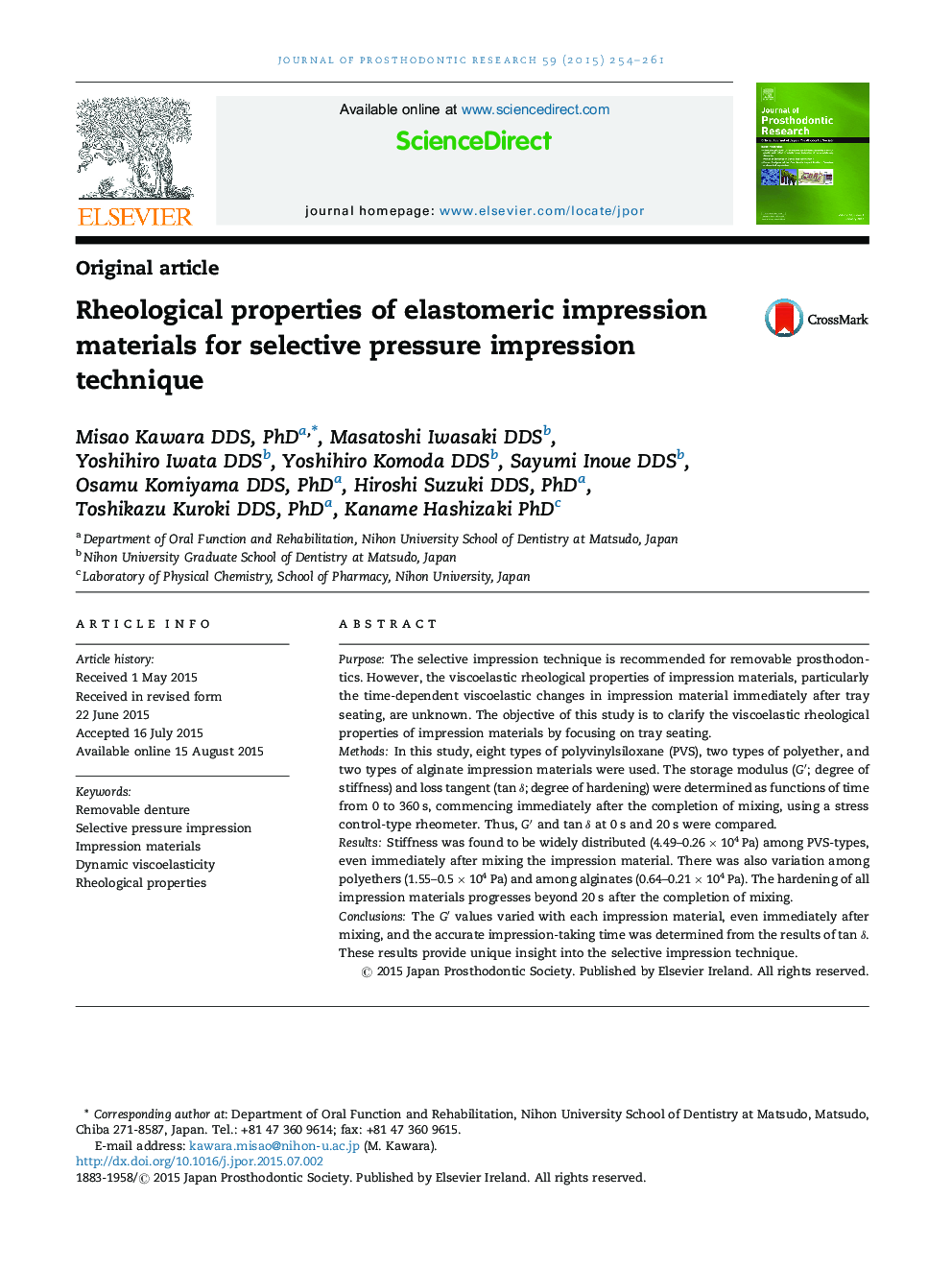| Article ID | Journal | Published Year | Pages | File Type |
|---|---|---|---|---|
| 3160615 | Journal of Prosthodontic Research | 2015 | 8 Pages |
PurposeThe selective impression technique is recommended for removable prosthodontics. However, the viscoelastic rheological properties of impression materials, particularly the time-dependent viscoelastic changes in impression material immediately after tray seating, are unknown. The objective of this study is to clarify the viscoelastic rheological properties of impression materials by focusing on tray seating.MethodsIn this study, eight types of polyvinylsiloxane (PVS), two types of polyether, and two types of alginate impression materials were used. The storage modulus (G′; degree of stiffness) and loss tangent (tan δ; degree of hardening) were determined as functions of time from 0 to 360 s, commencing immediately after the completion of mixing, using a stress control-type rheometer. Thus, G′ and tan δ at 0 s and 20 s were compared.ResultsStiffness was found to be widely distributed (4.49–0.26 × 104 Pa) among PVS-types, even immediately after mixing the impression material. There was also variation among polyethers (1.55–0.5 × 104 Pa) and among alginates (0.64–0.21 × 104 Pa). The hardening of all impression materials progresses beyond 20 s after the completion of mixing.ConclusionsThe G′ values varied with each impression material, even immediately after mixing, and the accurate impression-taking time was determined from the results of tan δ. These results provide unique insight into the selective impression technique.
